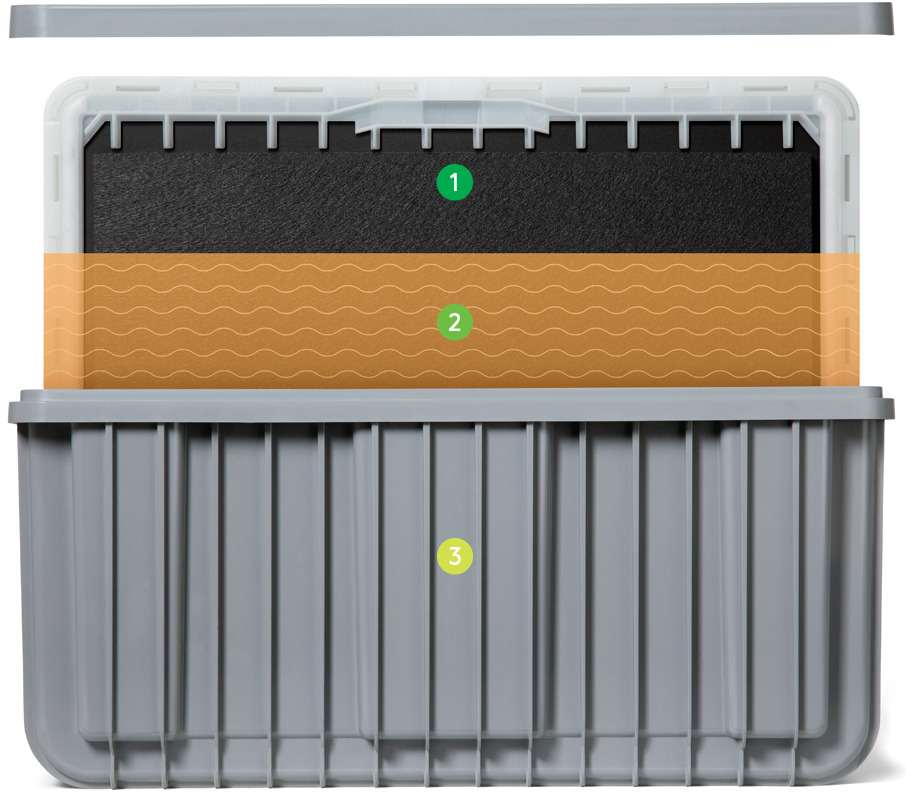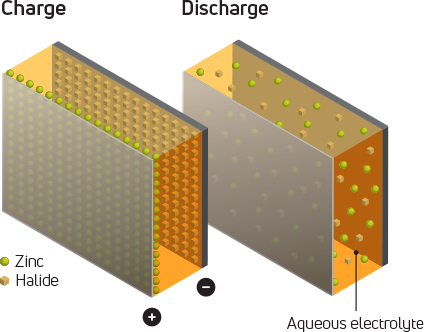Eos Z3
Three proprietary components.
One ingenious design.
With more than 122 patents pending, published, or issued, our streamlined Eos Z3 battery module design features an aqueous electrolyte, bipolar electrodes, and a polymer casing.

Realizing the full power of zinc.
Eos Z3 modules are as high-performing and price-competitive as leading industry storage solutions in the intraday market. But our proven zinc-powered chemistry delivers significant additional operational advantages in 3- to 12-hour discharge duration applications that other technologies can’t.
Fully recyclable at the end of their usable life, Eos batteries are a truly sustainable solution.
Find out how we’re ensuring continuous innovation

